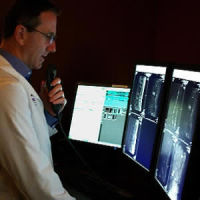Radiology continues to benefit from constant innovation and technological advances. However, for promising new imaging technologies to reach widespread clinical practice, radiology leaders must be actively engaged beginning at the earliest phases of obtaining regulatory approval, conducting early clinical evaluation, securing reimbursement, and engaging stakeholders to encourage widespread adoption, according to a white paper published in the journal Academic Radiology.
The Radiology Research Alliance Task Force on Translating New Imaging Technologies into Clinical Practice was convened to produce this white paper, which discusses the multiple hurdles that novel imaging applications face before widespread clinical adoption. These include regulatory approval, robust clinical evaluation, and third-party reimbursement.
Physicians rely on the power of medical imaging to guide diagnoses and treatment plans. Surgeons and interventional radiologists are increasingly using novel imaging techniques to guide percutaneous and intraoperative procedures.
Imaging technologies are considered medical devices under the Federal Food, Drug, and Cosmetic Act of 1938 and as amended by the Medical Device Regulation Act of 1976. Under federal regulation, the U.S. FDA, through its Center for Devices and Radiological Health, is tasked with overseeing the domestic production, the distribution, and sales of medical imaging devices. FDA approval is necessary before a manufacturer can distribute and market a new imaging device.
After regulatory approval, a new imaging technology needs the support of early adopters — individuals and organisations willing to take the risk in incorporating a novel technology into clinical practice. Potential early adopters need to weigh multiple considerations before adoption, such as upfront capital costs, workflow and training requirements. Often, early adopters are champions open to collaborating with industry partners to help evaluate the clinical efficacy of new technologies in real-world settings. Manufacturers seek to involve leading clinical radiologists with sufficient political and thought leadership influence to ensure that unanticipated barriers to technology adoption in their local clinical setting are avoided.
Just as regulatory approval and promising efficacy data are rate-limiting steps to the diffusion and adoption of new technology, so too is the adequacy of reimbursement, the paper notes.
"Because adequate payer reimbursement can often determine widespread adoption, radiologists involved in developing new clinical services can proactively address issues related to coding, valuation, and insurance coverage," the authors write.
For broader adoption, radiologists and technologists must feel comfortable with new imaging technologies. The paper uses digital breast tomosynthesis (DBT), a recently adopted advanced imaging technique, as an example. For DBT, 3D images are obtained during the same compression as a routine digital mammogram, and technologists use existing patient positions and techniques. With the adoption of any new technology, the paper says, radiologists’ workflows may be significantly impacted. Workflow similarity, as is the case for DBT, likely accelerates new imaging technology adoption.
According to the white paper, radiologists must engage with all stakeholders, and particularly patients, to collectively demonstrate improved value for new imaging technologies as they strive to drive broader adoption.
"Radiologists will be increasingly expected to quantify the incremental value of new imaging technologies, and should build partnerships with industry and patient advocacy groups to advance novel imaging innovations," the authors write.
Source: Academic Radiology
Image Credit: Pixabay
Latest Articles
Radiology, clinical practice, imaging techniques
Radiology continues to benefit from constant innovation and technological advances. However, for promising new imaging technologies to reach widespread clinical practice, radiology leaders must be actively engaged beginning at the earliest phases of obtai



























